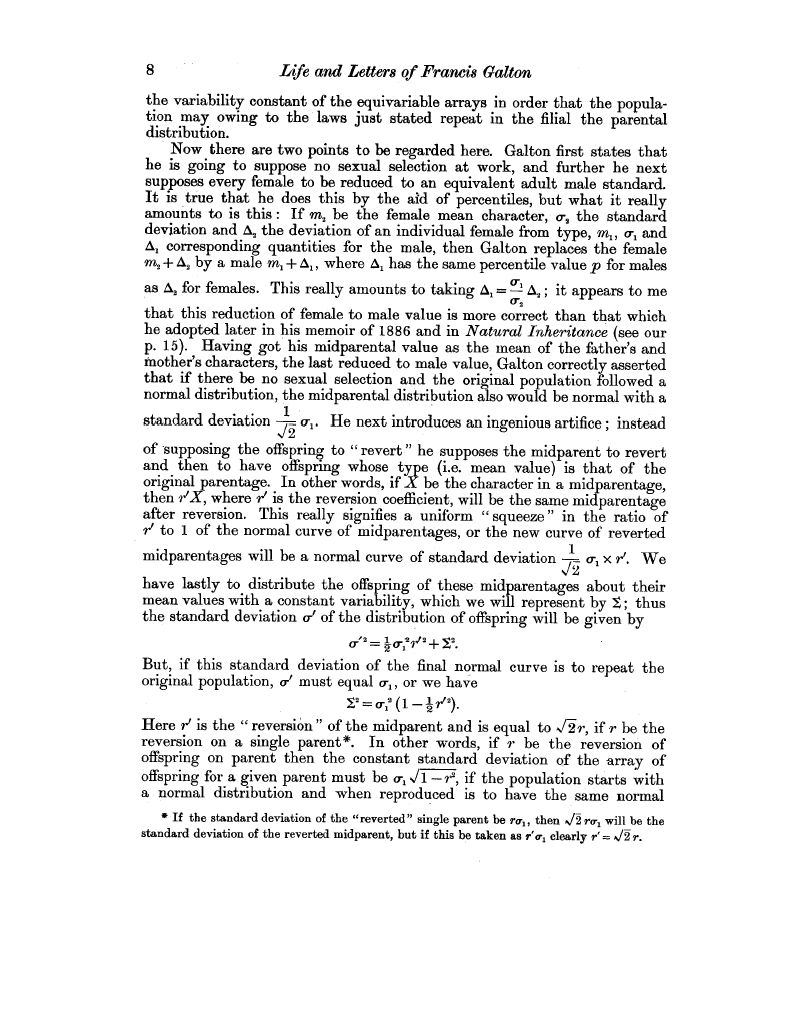| ||||||

OCR Rendition - approximate
8 Life and Letters of Francis Galton the variability constant of the equivariable arrays in order that the population may owing to the laws just stated repeat in the filial the parental distribution. Now there are two points to be regarded here. Galton first states that he is going to suppose no sexual selection at work, and further he next supposes every female to be reduced to an equivalent adult male standard. It is true that he does this by the aid of percentiles, but what it really amounts to is this : If m, be the female mean character, a-, the standard deviation and 0, the deviation of an individual female from type, ml, o•, and 0, corresponding quantities for the male, then Galton replaces the female m, + 0, by a male m, + Al , where A, has the same percentile value p for males as A2 for females. This really amounts to taking A,= ~' A,; it appears to me (T2 that this reduction of female to male value is more correct than that which he adopted later in his memoir of 1886 and in Natural Inheritance (see our p. 15). Having got his midparental value as the mean of the father's and mother's characters, the last reduced to male value, Galton correctly asserted that if there be no sexual selection and the original population followed a normal distribution, the midparental distribution also would be normal with a standard deviation J2 a-,. He next introduces an ingenious artifice ; instead of supposing the offspring to " revert he supposes the midparent to revert and then to have offspring whose type (i.e. mean value) is that of the original parentage. In other words, if X be the character in a midparentage, then r'X, where r' is the reversion coefficient, will be the same midparentage after reversion. This really signifies a uniform " squeeze " in the ratio of r' to 1 of the normal curve of midparentages, or the new curve of reverted midparentages will be a normal curve of standard deviation v , ~ , x r'. We have lastly to distribute the offspring of these midparentages about their mean values with a constant variability, which we will represent by % ; thus the standard deviation o-' of the distribution of offspring will be given by a 2 1a-"' /2+c{2. - 2 But, if this standard deviation of the final normal curve is to repeat the original population, a-' must equal a-,, or we have 12 - ai2 (1 - 1 7-12). Here r' is the " reversion " of the midparent and is equal to fir, if r be the reversion on a single parent*. In other words, if r be the reversion of offspring on parent then the constant standard deviation of the array of offspring for a given parent must be o ,/1-r', if the population starts with a normal distribution and when reproduced is to have the same normal # If the standard deviation of the "reverted" single parent be rQ„ then ^l2 ro-, will be the standard deviation of the reverted midparent, but if this be taken as r'v, clearly r'= ^/2 r.
|